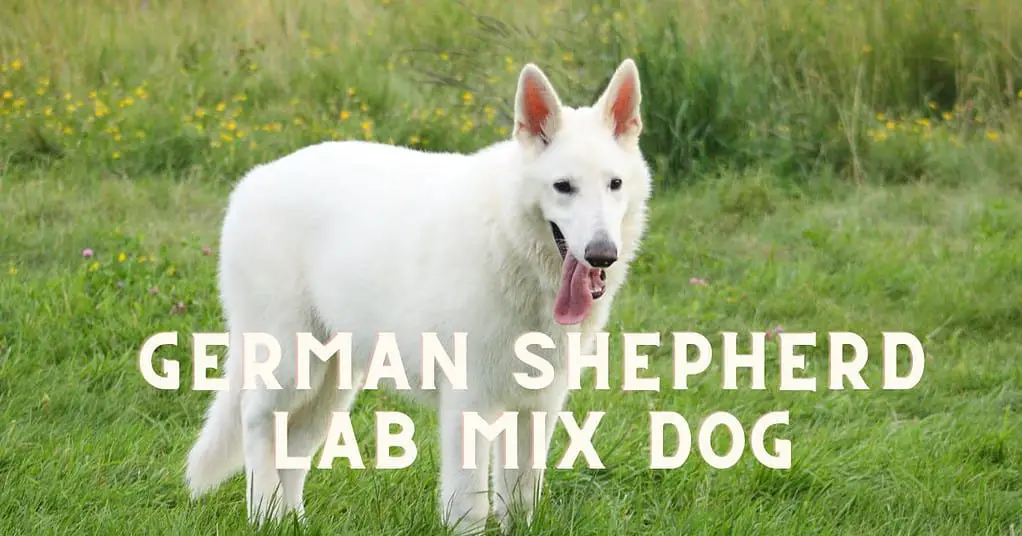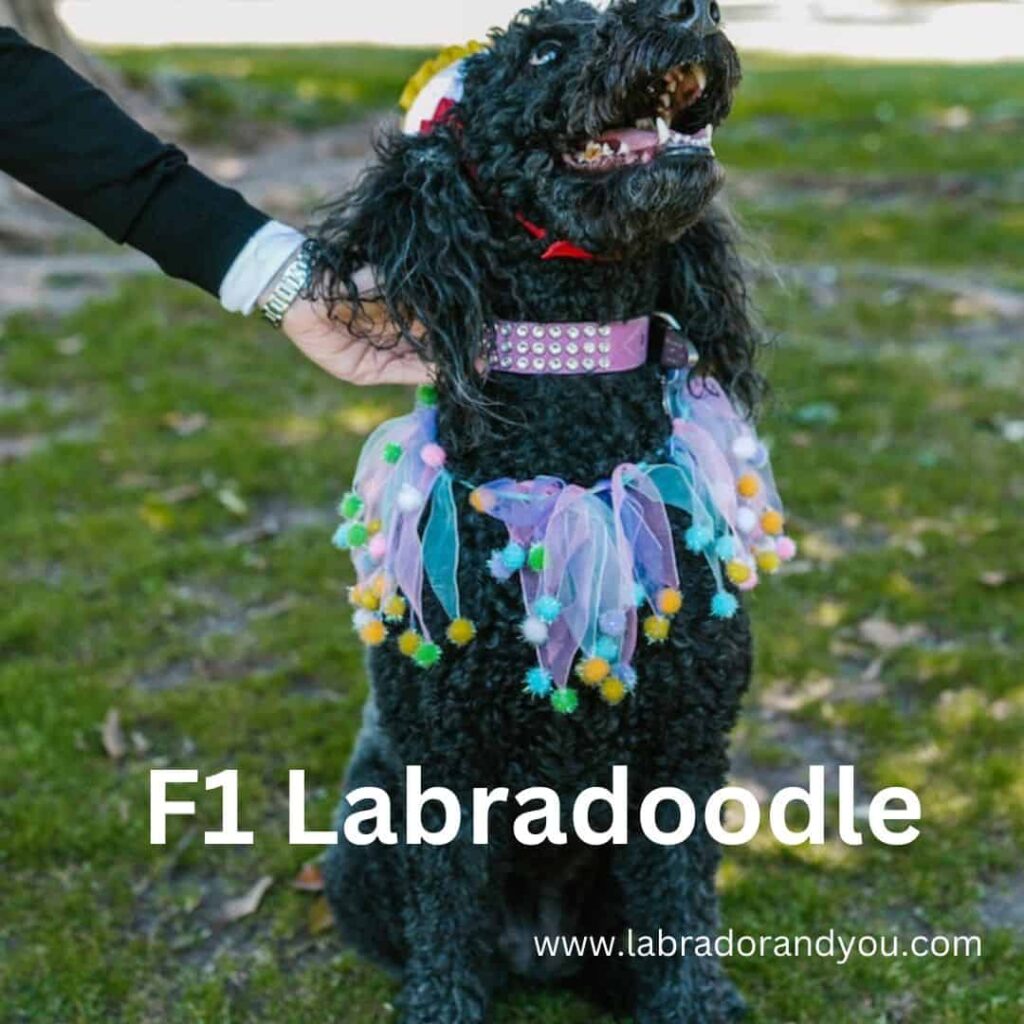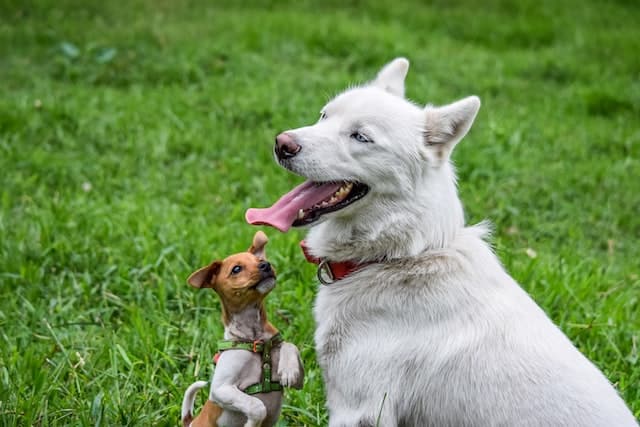Embodying the Great Pyrenees’ majestic strength and the Labrador Retriever’s friendliness, the Great Pyrenees Lab mix, aka the Pyrador, is a large, lovable breed. The Pyrador is known for its intelligence, trainability, and protective instincts. Pyradors are great with children and other pets and make great family dogs. However, they require regular exercise and grooming, but they are generally low-maintenance dogs. Also, its unique attributes include its fluffy double-coat, in shades of white and cream.
Pyrador Breed Information
Parent Breeds: Labrador retriever + Pyrenees
The Pyrador is a unique and fascinating breed that owes its traits to the parent breeds with storied histories. The Great Pyrenean Mountain Dog hails from the mountainous region between France and Spain. They take their name from the Pyrenees mountains.
This powerful working dog was originally bred to protect livestock from predators like wolves and bears. Besides, Labrador Retrievers originated in Newfoundland (now part of Canada). They were utilized by fishermen who needed help hauling nets and retrieving fish in the 18th century.
Renowned for their intelligence, trainability, and affectionate nature, a labrador retriever ranks 2nd among America’s most popular dog breeds.

Great Pyrenees Dogs Characteristics
History Of The Breed
The Great Pyrenees Lab mix is a relatively new crossbreed created by crossing the purebred parents. While these two breeds have existed for centuries, the Great Pyrenees originated in North America in 1824.
The Labrador Retriever has a long history as an invaluable hunting companion, tracing back to Newfoundland in Canada. It was bred for retrieving fishnets and fowl from cold waters.
Crossbreeding between these renowned breeds has resulted in an intelligent and loyal hybrid. It embodies the gentle, affectionate traits of the purebred Lab and the strong protective instincts of Great Pyrenees dogs.

great pyrenees lab mix size
The Great Pyrenees Lab Mix has a unique appearance that can vary depending on the individual dog. Their coat can be thick and dense, like their Great Pyrenees parent, or short and shiny, resembling their Labrador Retriever lineage.
This beautiful hybrid dog has large floppy ears that frame its face perfectly. This mixed breed usually has dark brown, with an attentive expression reflecting their intelligence.
The Pyrador’s body is muscular yet graceful, with strong legs to support its weight. These popular dogs are often associated with white bear due to their coat colors.
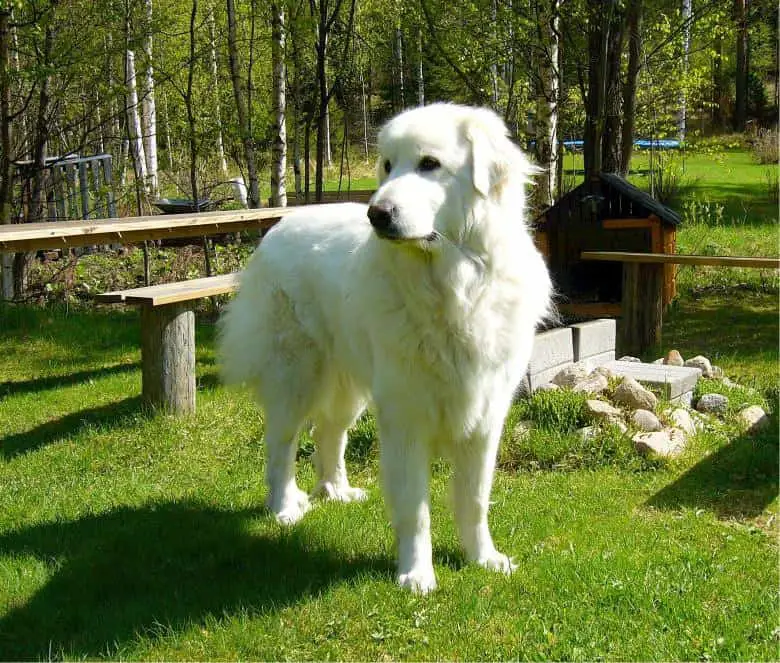
great pyrenees lab mix temperament
The Great Pyrenees Lab mix is a gentle, well-mannered, and loyal dog. Its affectionate demeanor makes it an excellent family pet and lifelong companion. While they are loving companions, Great Pyrenees Lab mixes have guarding instincts too. They would happily protect their families at all costs.
Great Pyrenees Labrador mix may exhibit territorial behavior towards strangers or other animals. They are considered intelligent dogs who thrive on praise and positive reinforcement.
pyrenees mixed with lab Coat Colors
The coat of the Great Pyrenees Lab Mix varies depending on which parent it takes after more. The Great Pyrenees has a long, thick, and weatherproof double coat. It is all white or white with gray, tan, reddish-brown, or badger markings.
Besides, Labrador Retrievers have shorter and straighter coats. The coat of this purebred dog requires less maintenance than a Great Pyrenees. As for colors, mixed-breed dogs can inherit any combination from either or both parents. The Lab Great Pyrenees Mix may have the following combinations –
- Solid-colored fur in yellow (resembling a yellow Labrador Retriever)
- Black (resembling a Black Labrador Retriever)
- Chocolate brown (resembling Chocolate Labrador Retriever)
Some mixed breeds may exhibit unique patterns like spots or stripes not found in purebred dogs.
great pyrenees lab puppies Intelligence & Trainability
The Lab Great Pyrenees Mix is a highly intelligent breed that thrives on learning and training. They inherit their intelligence from both parents. Their eagerness to learn makes them easy to train with patience and consistency.
As working dogs, they require mental stimulation and challenges. Keep your Pyrador pup’s mind sharp by teaching them tricks or participating in advanced obedience classes.
Overall, the Lab Great Pyrenees Mix is a smart, trainable dog. It requires mental stimulation like any other large breed dog out there. Use reward-based training to make significant progress.
pyrenees lab Energy & Exercise
Great Pyrenees Lab mixes are energetic and require adequate exercise to thrive. These dogs need daily physical activities like walks, runs, or playtime to manage their high energy levels and weight.
Without proper exercise, they can become bored and destructive. Remember, excessive exercise during a young age may negatively impact the dog’s joint health later in life.
To prevent injury, it is necessary to provide gentle exercises for puppies, like short walks. Gradually building up to longer ones as they grow older is suggested.

Health Problems
Great Pyrenees Lab Mix is generally a healthy breed. However, like all dogs, they are prone to certain health issues. One common issue in Labs and Pyrenees is Elbow dysplasia.
Larger dogs like Pyradors usually experience elbow and hip dysplasia. It’s a genetic condition that causes the elbow joint to develop abnormally, leading to arthritis and chronic pain. Eye problems like cataracts, retinal atrophy, and progressive retinal degeneration are also prevalent in both parent breeds.
Bloat or Gastric torsion is another serious concern for large breed dogs like Lab Great Pyrenees Mix. It occurs when the stomach twists on itself, causing gas buildup. Osteosarcoma, or common bone cancer, is among other health problems that may arise besides degenerative myelopathy. The latter is a spinal cord issue.
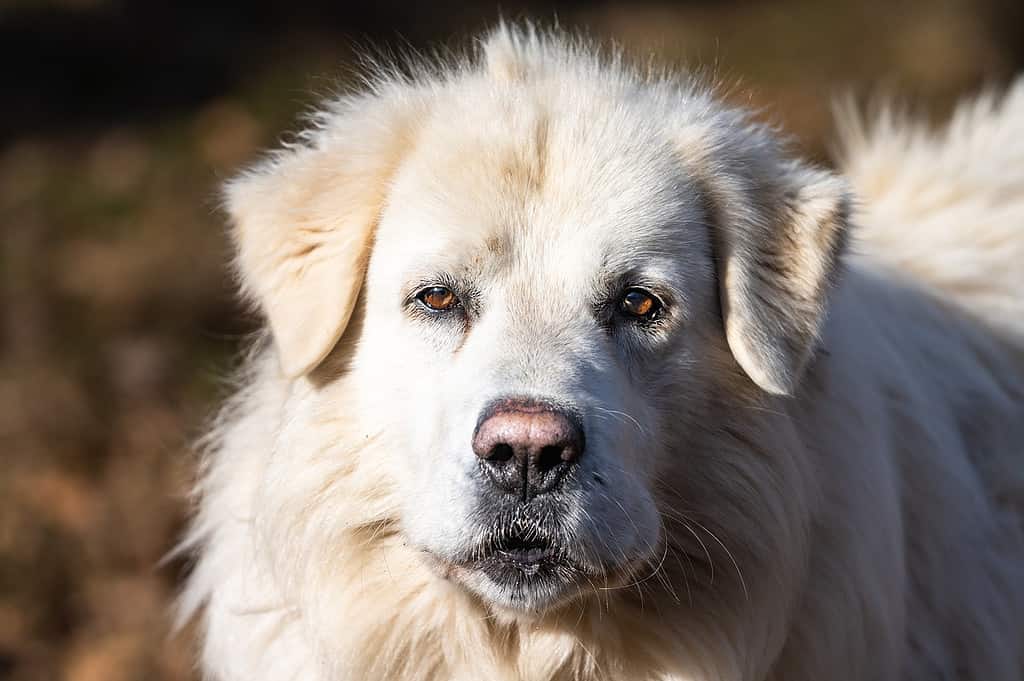
Guarding Instincts
The Lab Great Pyrenees Mix inherited the strong guarding instincts of its Great Pyrenees parent. They are great dogs for those looking for a dog that can provide extra security and protection to their house or property. They can be great guard dogs.
However, potential owners should remember that this trait needs proper training and early socialization. They must teach their furry friend how to distinguish between friend and foe. It will not let them become overly aggressive with strangers, visitors, or other animals.
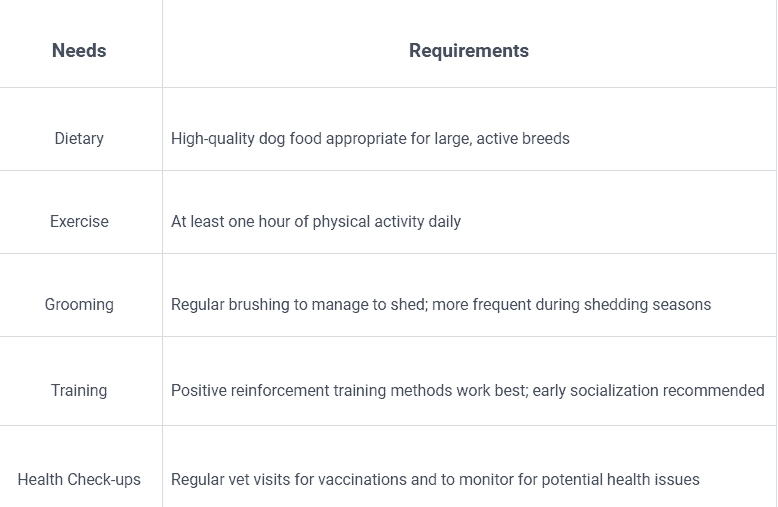
pyrenees mix with lab Nutrition And Grooming
Proper nutrition and grooming maintain the health and well-being of your Great Pyrenees Lab mix. Here are some tips to keep in mind:
Diet of pyrenees and lab mix
As a large breed dog, your Pyrador needs a balanced diet rich in protein and nutrients. Consult with your veterinarian to determine the right type and amount of food to feed your dog. It will be based on their age, size, activity level, and overall health.
Grooming
Your Pyrador’s thick coat requires daily brushing to prevent matting and tangles.
- Use a slicker brush or metal comb to remove loose fur and detangle any knots.
- Bathe your pup as needed but not too frequently, as it may dry out their skin.
- Trim their nails regularly, clean their ears weekly, and brush their teeth daily.
Shedding
Your Pyrador will shed seasonally throughout the year due to its double coat. Be prepared for lots of shedding when they blow out their undercoat during spring and fall. Regular grooming can help control shedding. You may need to invest in a de-shedding tool during the shedding season.
Is A full-grown Pyrenees lab mix Right For You?
Before deciding to bring a Pyrador into your home, there are several factors you should consider. Lifestyle, home environment, and budget are a few.
How Big Is Your Home?
The Great Pyrenees Lab mixes are large dogs that require ample space to move around comfortably. This breed may not be best for you living in an apartment or small home. They are not recommended for homes without much outdoor space.
If you have a larger space for a big dog to play and run around, the Pyrador can make an excellent addition to your family. When choosing a pet, consider indoor and outdoor living spaces.
Large dogs need plenty of exercise and stimulation. They also need enough space inside for their beds and toys without feeling cramped or confined.
Do You Have An Active Lifestyle?
An active lifestyle is crucial in deciding whether the Great Pyrenees Lab mix suits you. Pyradors are energetic and high-spirited dogs. They require daily exercise to stay healthy physically and mentally.
If you have a sedentary lifestyle with little time or space, it might be best to consider other dog breeds that require less exercise. Regular physical activity helps curb behavioral issues like restlessness and anxiety in large breed dogs like the Pyradors.
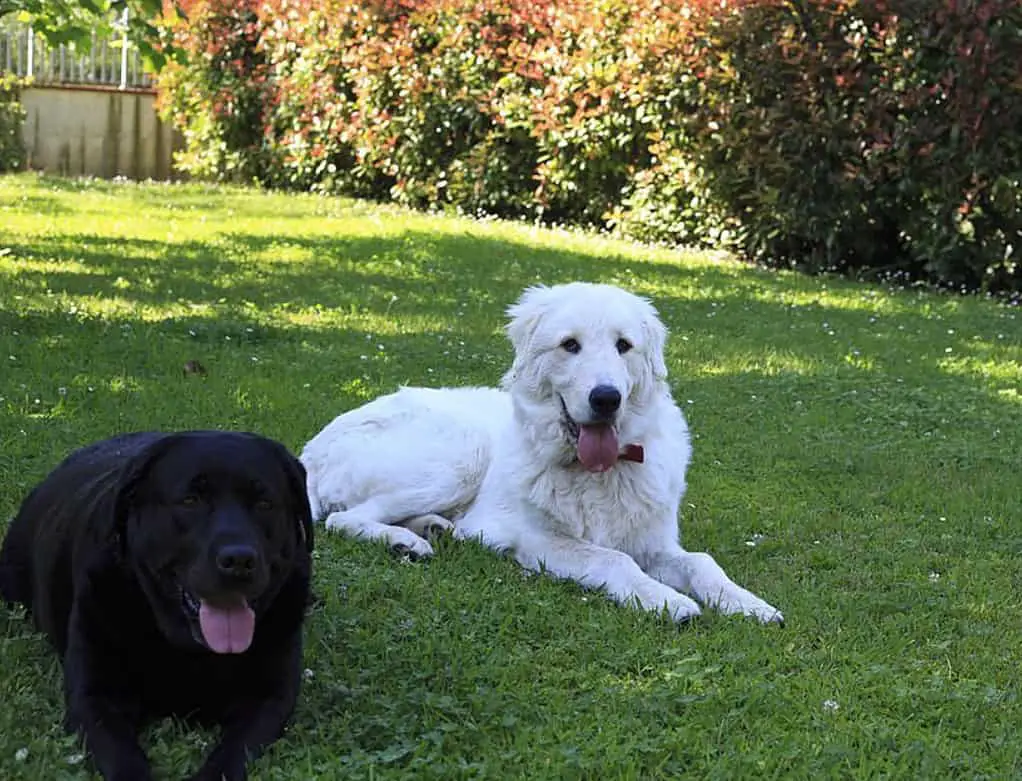
Is There Usually Someone Around The House?
The Great Pyrenees Lab mix is a friendly and social dog that enjoys spending time with its family. It’s important to consider whether someone will be around the house most of the day to keep your furry friend company. This breed can become anxious or bored if left alone for long periods. It leads to destructive behavior like chewing on furniture or howling.
- It’s essential to ensure your pup receives proper attention and care when planning your daily routine.
- Hire a dog walker or pet sitter when you are away from home for extended periods during the day.
- It can help provide companionship and stimulate them mentally and physically.
How Do You Feel About Dog Hair?
Assessing their grooming needs is important if you consider adopting a Great Pyrenees Lab mix. Both parent breeds have thick coats that shed heavily. It means your Pyrador may require frequent brushing. However, many owners find the benefits of having this wonderful companion far outweigh the inconvenience of shedding.
If you have allergies or sensitivities to dog hair or dander, the Great Pyrenees Lab mix might not be the best breed. While no dog is truly hypoallergenic, some breeds shed less than others. Some produce fewer allergens overall.

Do You Have Small Children?
If you have small children, you must factor in their safety and the Pyrador’s temperament. Great Pyrenees Lab Mix can make wonderful family companions, but they have a natural guarding instinct. It can sometimes be mistaken for aggression.
Proper early socialization for Pyradors to prevent mishaps with small children is necessary. Moreover, their large size makes accidental knockdowns possible if not well-trained. So adult supervision must always be there when the pup interacts with young children.
Do You Want A Guard Dog?
The Great Pyrenees Lab mix may be the perfect choice if you want a guard dog for an extra layer of security. The Great Pyrenees’ parent breed is known for its ability to serve as a livestock guardian.
It means they have natural instincts to protect their territory and those in it. With their size and protective instincts, ensure proper socialization from a very young age. It will help the dog behave around people and other animals. With appropriate training, they can become excellent guard dogs.
Can You Afford It?
Consider the financial aspect of owning a Great Pyrenees Lab mix before committing. These dogs can be expensive, from purchasing them from reputable breeders to regular veterinary care, food, grooming, and other accessories.
Their large size means they may require more significant quantities of food, increasing costs over time. Don’t let cost be the sole factor when deciding if this breed is right for you. As with any pet, there are often unexpected expenses that pop up. Adopting animal shelters or rescue organizations can significantly reduce the initial cost of acquiring a dog.
There may still be some adoption fees involved in this process. But it usually covers medical procedures like spaying/neutering and vaccinations.
Finding A Pyrador Breeder
Finding reliable and reputable Pyrador breeders is essential when adding a Great Pyrenees Lab mix to your family. The key to locating the right breeders is conducting thorough online and offline research.
- Start by visiting dog shows. Speak with owners of Pyradors and join online forums for this mixed breed.
- Ask questions about the breeding practices. It includes health testing for parent dogs (particularly hip and elbow dysplasia) and any available pedigree information.
A good breeder will be open to answering all your concerns while providing references from past clients. Visit the breeding facility in person. Look at how adult dogs are housed, socialized, and cared for before purchasing a puppy.
Rescues & Shelters
Finding a Great Pyrenees Lab mix, or Pyrador, at rescues and shelters can be an excellent way to bring home a loving companion. It provides a second chance for these endearing dogs. Many mixed-breed dogs, including Pyradors, are in animal shelters. It may be due to various circumstances like overpopulation or owner surrenders.
To locate reputable rescues and shelters specializing in the Pyrador breed or similar large breeds, utilize online resources. For instance, Petfinder.com and AdoptAPet.com enable you to search by size and dog type. Reach out to local Labrador Retriever and Great Pyrenees clubs for additional guidance.
| Name | Type | Location | Website |
| National Pyr Rescue | Rescue Organization | Nationwide | www.nationalpyr.org |
| Big Fluffy Dog Rescue | Rescue Organization | Nationwide | www.bigfluffydogs.com |
| Carolina Great Pyrenees Rescue | Rescue Organization | Indian Trail, NC | www.cgpr.org |
| Lab Rescue LRCP | Rescue Organization | Nationwide, based in Annandale, VA | www.lab-rescue.org |
| Brookline Labrador Retriever Rescue | Rescue Organization | Warrington, PA | www.brooklinelabrescue.org |
| Silver Bear Labs | Breeder | Rochester, WA | www.silverbearlabs.com |
| Southern Skies Labrador Rescue & Adoption | Rescue Organization | Huntsville, AL | www.southernskiesrescue.org |
| PuppySpot | Breeder Marketplace | Nationwide | www.puppyspot.com |
Pyrador Products And Accessories
Various products and accessories are available to make life easier for you and your furry friend. Some popular items include chew toys, interactive puzzles, and agility equipment.
Chew toys can help satisfy your dog’s natural urge to chew while promoting dental health. Agility equipment is perfect for those who enjoy giving their dog physical challenges. This equipment includes jumps, tunnels, weave poles, and teeter-totters.
Do you have outdoor space or access to a local park? Setting up an agility course there can be fun for you and your Pyrador.
great pyrenees lab mix lifespan
The Great Pyrenees Lab Mix has a life expectancy of around 10 to 12 years. This may vary depending on diet, exercise, and overall care. Typically, larger breed dogs tend to have shorter lifespans than smaller breeds.

FAQs of pyrenees mixed with lab
How Big Will A Great Pyrenees Lab Mix Get?
The Great Pyrenees Lab mix is a large dog. It weighs between 70 to 100 pounds and has a 20 to 25 inches height. Depending on the gender, weight can range from 70 to 120 pounds. The height ranges between 23 and 28 inches. Female Pyradors are usually smaller than male Pyrador.
Are Pyradors Good Dogs?
Pyradors make excellent family pets due to their affectionate and loyal nature. They are gentle with children and love being around people in general. It makes them ideal for households with plenty of people around most of the time. They sometimes inherit the playful nature of the Labrador Retriever parent. It makes them a loving dog for families who enjoy outdoor activities.
Are the Great Pyrenees Aggressive Dogs?
Great Pyrenees are generally not considered aggressive dogs. However, they do have an instinct to guard and protect their homes and families. It can sometimes be mistaken for aggression.
Are Great Pyrenees Smart Dogs?
Great Pyrenees dogs are intelligent, but their intelligence manifests in different ways. They were originally bred as working dogs. Their ability to make independent decisions when they protect flocks and herds against predators makes them distinct.
Are Pyradors Hypoallergenic?
The Pyrador mixed breed may be a desirable choice for those with allergies. However, it is uncertain whether they are entirely hypoallergenic or not. The Great Pyrenees Lab mix has a double coat that sheds moderately throughout the year. It can trigger allergies among people sensitive to pet hair and dander.
Author Profile
- Site Owner And Dog Lover
-
Aritra, the founder of Labradorandyou.com, is a lifelong dog lover whose passion ignited for Labradors for their loyalty and intelligence. With extensive research and personal experiences, Aritra has become a Labrador expert, offering a rich resource on the breed. Labradorandyou.com provides reliable, timely, and evidence-based information, including Labrador-specific product reviews, training techniques, and care tips.
Labradorandyou.com was born out of Aritra's passion and his desire to share his profound knowledge about the breed. The site serves as a comprehensive resource, offering a wealth of up-to-date information for Labrador owners and enthusiasts alike
Also by the author
-
 Lab-TypesNovember 17, 2023Old Dog Seizures: Causes, Symptoms, and Treatment Options
Lab-TypesNovember 17, 2023Old Dog Seizures: Causes, Symptoms, and Treatment Options
-
 Lab-TypesNovember 17, 2023Why Is My Dogs Poop Yellow? 8 Reasons & Solutions
Lab-TypesNovember 17, 2023Why Is My Dogs Poop Yellow? 8 Reasons & Solutions
-
 ReviewsNovember 17, 2023The Only Hill’s Science Diet Review You Need To Read
ReviewsNovember 17, 2023The Only Hill’s Science Diet Review You Need To Read
-
 Lab-TypesNovember 17, 2023How To Adopt An Emotional Support Dog?
Lab-TypesNovember 17, 2023How To Adopt An Emotional Support Dog?
